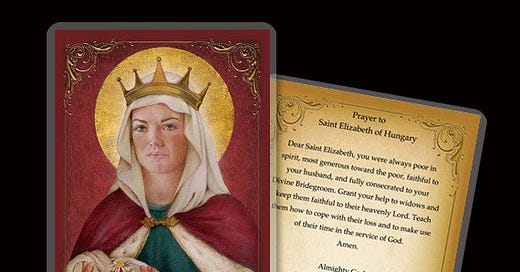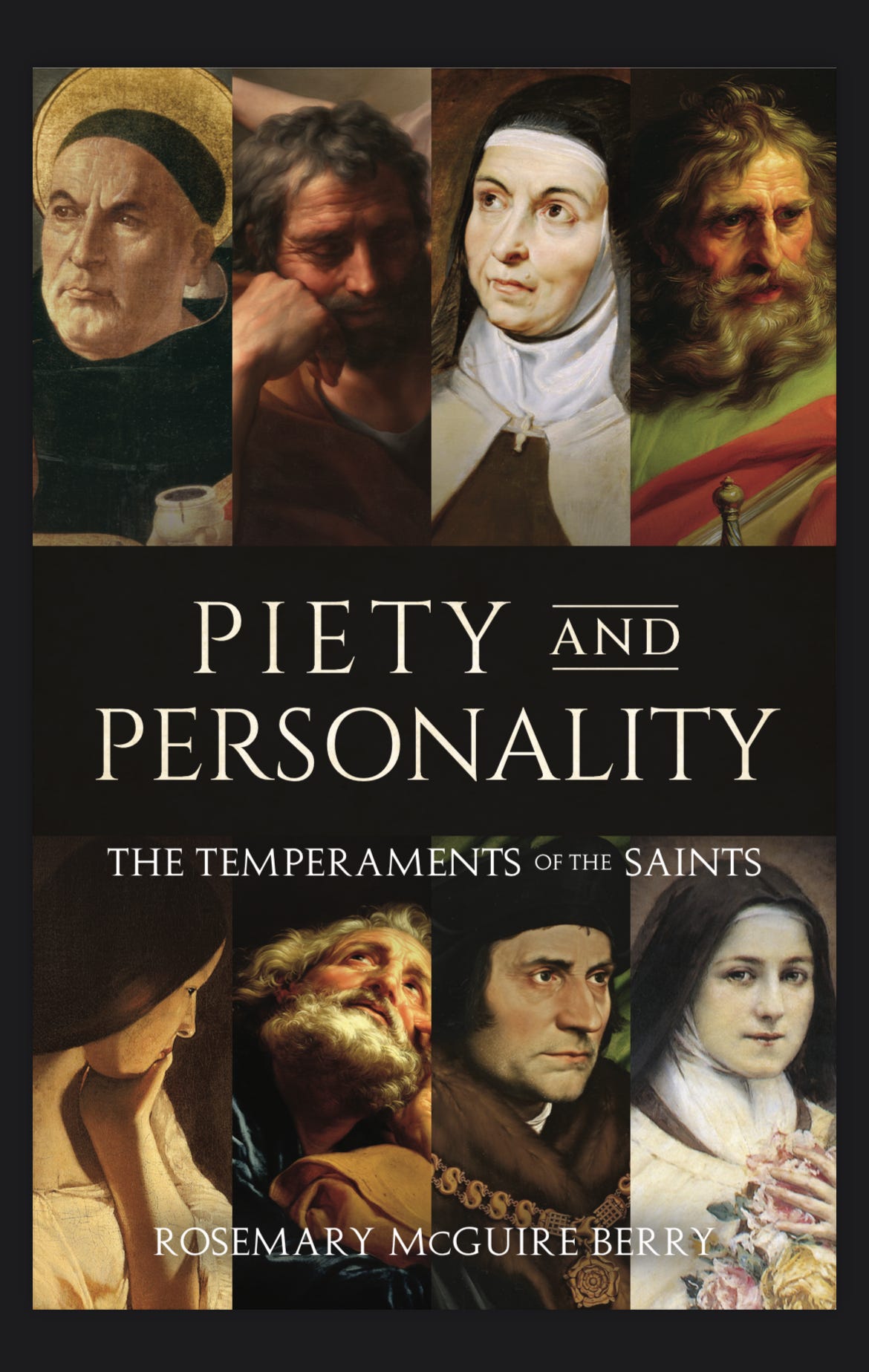(Artwork by PortraitsofSaints.com - Tracy Christiansen - I love her work!)
I’m very proud of my Irish heritage, but I also have some other ancestral connections. This weekend we celebrated the feast of the German St. Gertrude, and my paternal grandmother was 100% German. St. Gertrude, pray for us!
My maternal grandmother was 100% Hungarian. Her parents, Paul and Gertrud, were born in Hungary. Let’s talk about a woman of adventure who is known to us today as St. Elizabeth of Hungary!
When she was four years old, in A.D. 1211, she traveled six hundred miles from her homeland of Hungary (where her father was king) to a place called Eisenach in Thuringia. She was betrothed (promised in marriage) to an 11-year-old prince named Louis (or Ludwig in his native tongue). As a little princess, she traveled with knights to protect her and ladies in waiting to keep her company. Talk about an adventure!
Her parents had chosen well for her. “Louis was a very delightful character, generous, open-hearted, cheery…He seems to have been the sort of man whom everybody wanted to know and whom everyone admired.” (p. 76, Saints as Guides edited by C. Desmond Ford, SJ, with a prologue by C.C. Martindale, SJ)
Elizabeth was a kind and prayerful little girl, and she loved the boy chosen for her future dearly. As they grew older, they truly fell in love, each admiring the virtue in the other. It sounds like the perfect fairy tale, but of course we know in this life, there are always crosses to be carried as we follow Our Lord on the path to Heaven.
For Elizabeth, one of her crosses was a difficult mother-in-law. “Louis’s mother, Sophia, was a very proud and jealous woman, very full of the dignity of her position and much more alive to the duties which others owed to her than to those which she owed to God and to her neighbor; a complete contrast to Elizabeth.” (p. 78, ibid)
But despite his mother’s crankiness, Elizabeth and Louis were joined in holy matrimony. The young princess bride was now in charge of her household, ruling over the castle, servants and serfs. She gave to the poor liberally and visited the sick. The two young lovebirds were blessed with one son and two daughters.
“Eisenach was, you might say, a second Nazareth; a Catholic home first and foremost; founded and built on love; love beginning at home but reaching out to the ends of the earth.” (p. 79-80, ibid) Their life of love and unselfishness shed light on all around them.
When they had been married for eight years, and Elizabeth was expecting their fourth child, Louis signed up to join the Crusades. She was heartbroken, but Louis felt that he should join the other lords and knights of his time to free the holy places in Palestine, so that pilgrims could visit them safely again. Sadly for her, Prince Louis died of a fever on his way to the Holy Land.
In her early 20s, she was a bereaved widow and mother of four little children. She was devastated, and could only sob “Not my will but Thine be done,” in imitation of Christ. At this time, unfortunately, her difficult mother-in-law Sophia backed Louis’s cruel brother Heinrich, and they exiled Elizabeth and her four little children from the castle!
When we think of adventure, we think of something exciting and fun, but the adventures of life often come with hardship and adversity. The young happy princess was now reduced to begging and trying to find shelter for her little family, while suffering the deep grief of her widowhood.
She did find them some shelter, and supported them as best she could by making clothing for others. After a while, Louis’s knights returned from the Crusade, and found out what had happened to their princess. Their threats of retaliation caused Heinrich to make arrangements for Louis and Elizabeth’s children, and he acted as regent until the oldest boy Hermann came of age.
Elizabeth received a proposal of marriage from Emperor Frederick II, but she had no desire to betray Louis’s memory by remarrying. Instead, she became a Franciscan Sister, and worked among the sick and the poor. She died two years later, on November 17, 1231. Four years later, she was canonized by the Catholic Church.
One little tidbit I remember from reading about her many years ago: during one of the hardest times of her life, she received a vision of St. John the Apostle, and she was invited by Our Lord to make her confession to him and receive absolution. Imagine going to Confession to the gentle apostle of love, St. John! Imagine the kind words of encouragement one would receive from him! Food for meditation, eh?
This young Hungarian saint gives us a beautiful example of a woman of adventure. She loved God and her husband and children with all her might, and she also fiercely loved her duty to God and family and kingdom. At four years old, she embarked on what may have seemed a romantic adventure to a little princess, but then a short time later, she was sent off on another more difficult adventure, and she faced it with courage, love, and forgiveness.
Let’s take her for our example today and face the adventures in our lives with those same virtues! This is a continuation of our series on Women of Adventure, since we are reading together: Travels of Mother Cabrini or this shorter e-book: Letters from the Travels of Mother Cabrini.
In case you don’t follow me on Instagram, I want to share some exciting news. My own book will be available for pre-order from TAN Books on December 18th - one month from now, and here is the book cover!
Please pray with me that my book reaches as many souls as possible, and enlightens, encourages and inspires readers! Be part of my “PIT Crew” - Prayer Intercessory Team!





